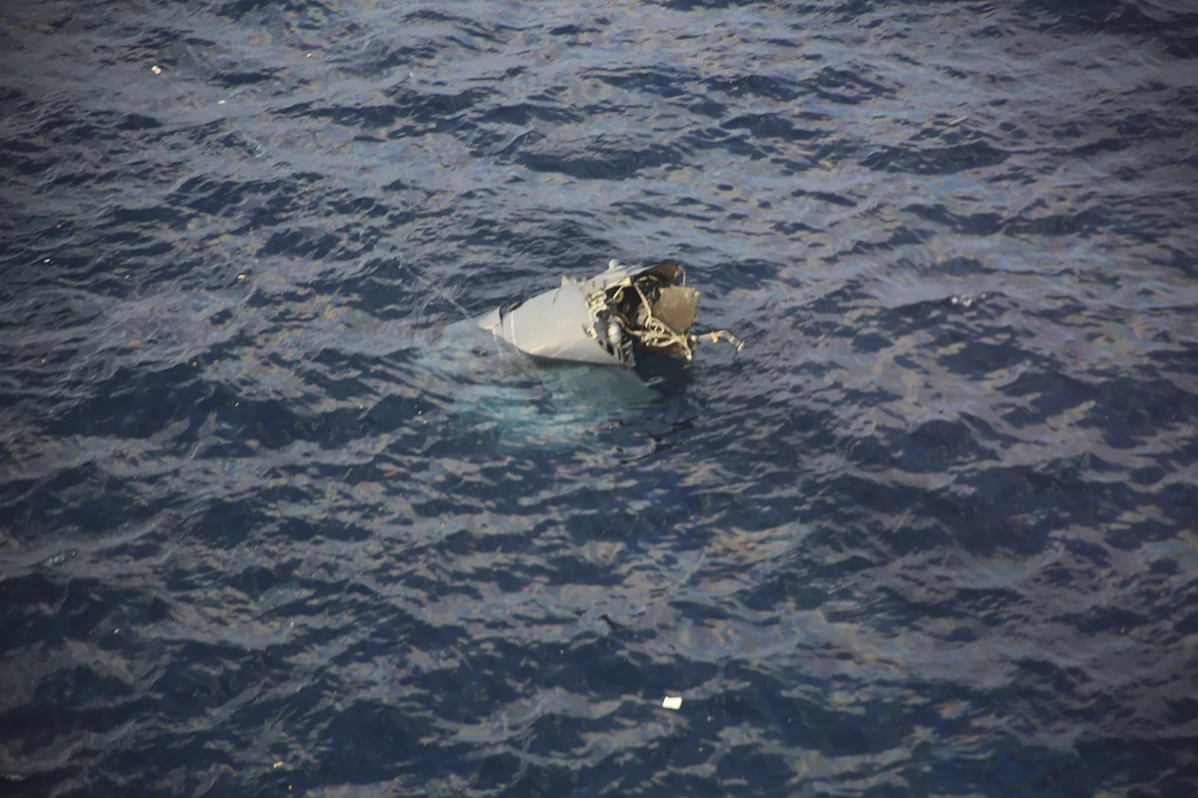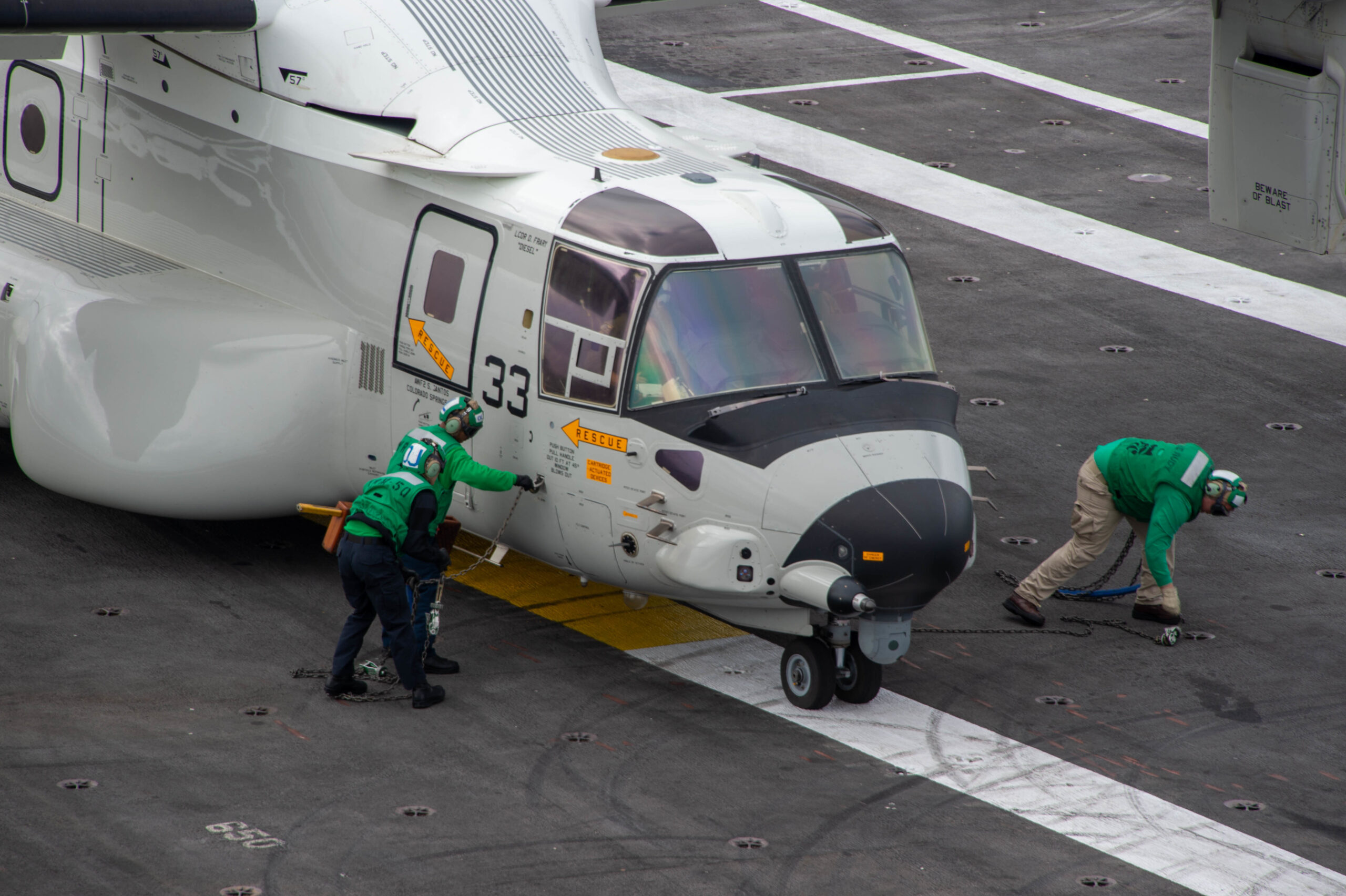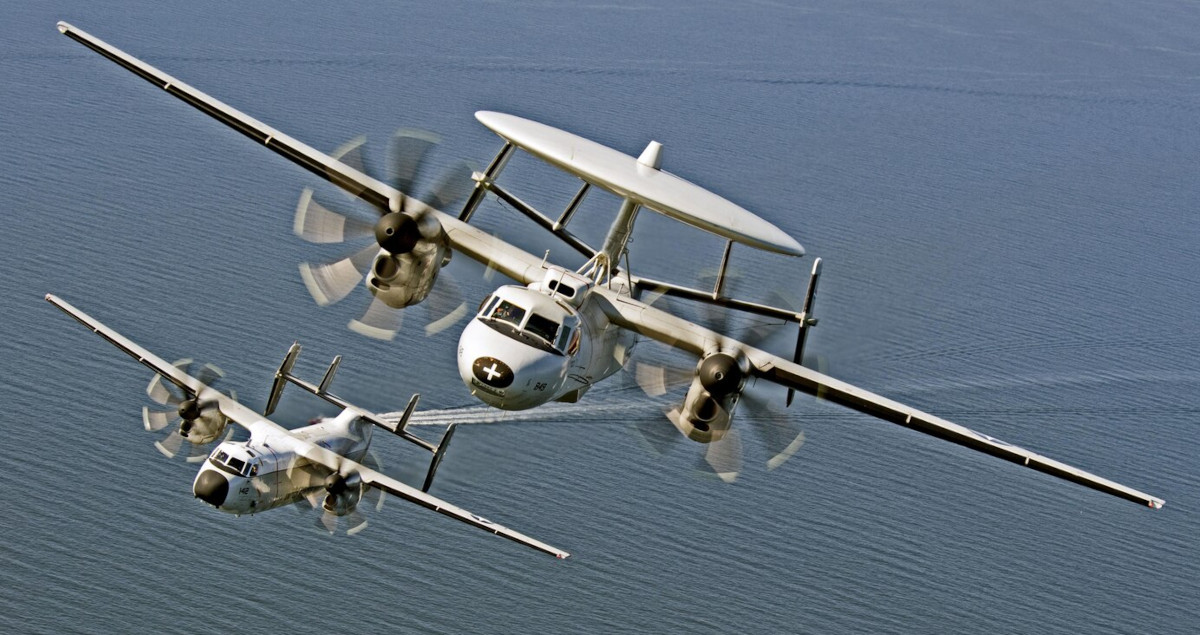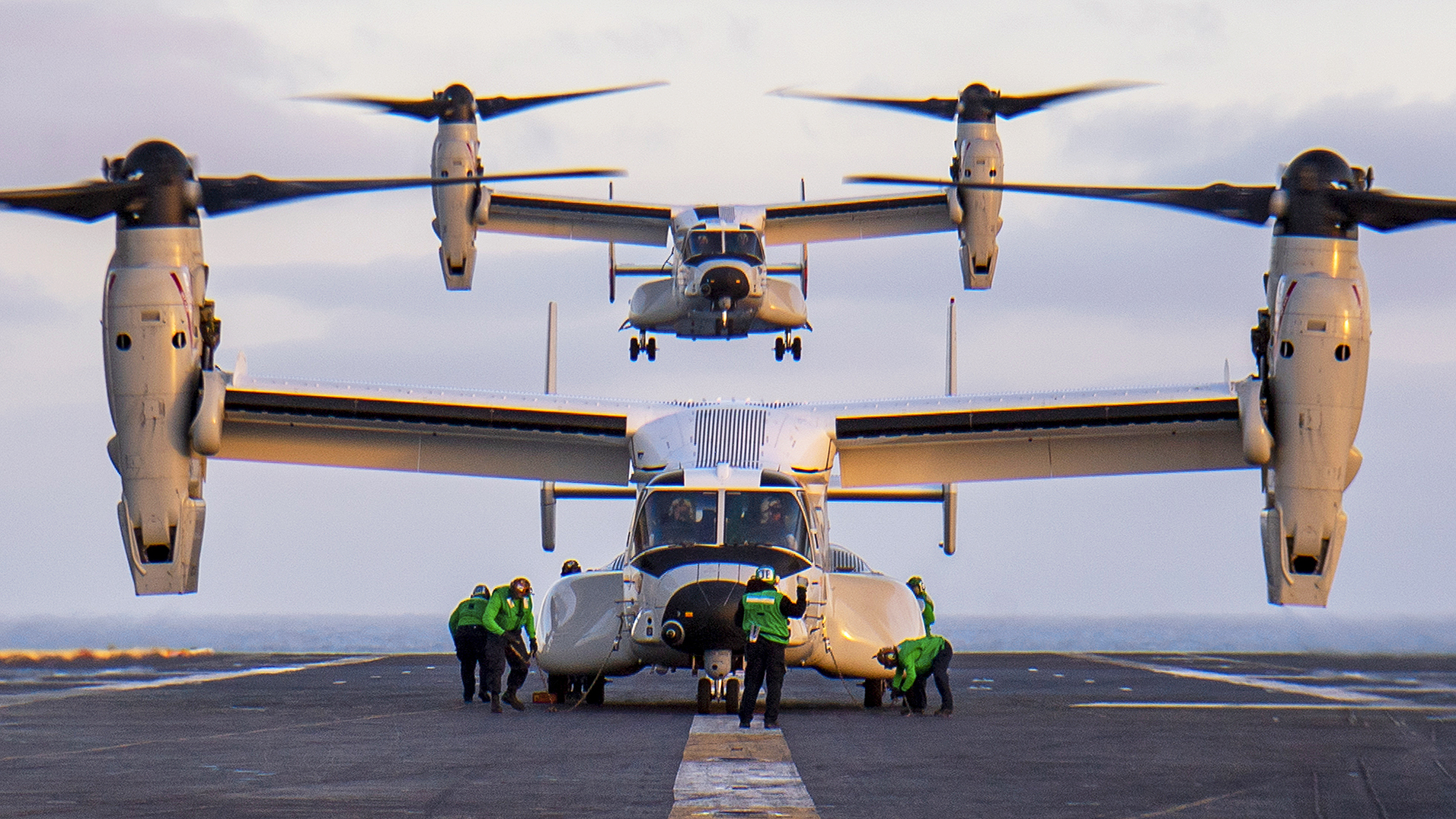Even before the entire fleet of V-22 tilt-rotor aircraft was grounded following a fatal crash of an Air Force Osprey off the coast of Japan in November, the Navy’s version was experiencing serious issues that limited its ability to fully perform its assigned missions. Those findings by the Pentagon’s top testing office come even though the Navy’s former air boss called the CMV-22B a “game changer” after its first operational deployment in 2022. The Osprey grounding has also forced the Navy to resort to using its dwindling fleet of C-2A Greyhounds to perform essential Carrier Onboard Delivery (COD) duties.
“The CMV-22B was not operationally suitable due to failures of many subsystems, with the ice protection system accounting for 44% of the total operational mission failures,” the Pentagon’s Office of the Director of Operational Test and Evaluation, or DOT&E, stated in its Fiscal Year 2023 annual report released last week.

Problems with the ice protection system are a significant concern for the CMV-22B, but there have been several potential drawbacks with having the aircraft take over the COD role since the program’s inception. Those issues include a lack of cabin pressurization. Unless its passengers and crew are on oxygen, the Osprey has to fly at lower altitudes, through poorer weather, and over long distances, at turboprop-like speeds. Being that its destination can be far out to sea with no nearby divert field, that can include being forced to fly through highly inclement weather. There are other key advantages to having the CMV-22B on the COD mission, which we will discuss in a moment.
The 44% of mission failures due to problems with the ice protection system appears to be a significant increase from what was previously known.
As we noted in the past, in February 2023, as the Navy announced the CMV-22B had obtained its Initial Operating Capability (IOC), Bloomberg News reported that the aircraft wasn’t yet “operationally suitable.” That was because it had only “partially met reliability requirements,” the Pentagon’s testing office said in a non-public assessment. Among the problems was that the CMV-22’s ice protection system “accounted for 25% of the operational mission failures, which will result in mission aborts.”

The DOT&E report, released last Thursday, showed that the ice protection system failure was responsible for twice the rate of missions being scrubbed compared to the assessment cited by Bloomberg. We’ve reached out to NAVAIR, the Bell-Boeing Joint Office, and the Pentagon to find out more details. The Bell-Boeing joint venture company, which is the prime contractor for the V-22 family, deferred questions to NAVAIR.
The report did not specify which other subsystems were failing or whether they involve issues that led to previous groundings.
The CMV-22B is based on the Marine Corps’ MV- 22B design but with several changes to support the COD mission: increased fuel capacity to extend the range, fuel jettison system, integrated public address system for making announcements in the cabin area, high-frequency radio for over-the-horizon communications, and cabin and cargo lighting to assist with cargo loading.

“The Communications Upgrade suite includes a Link-16 tactical datalink and an Iridium satellite phone to enhance capabilities when conducting logistics, search and rescue, and mobility missions as part of a Carrier Strike Group,” the report stated.
The Osprey has a controversial history that has included some high-profile mishaps, though it is unknown at this point whether any of its previous problems involve the other subsystems DOT&E said failed.
As we previously reported, the Air Force grounded its CV-22Bs in August 2022 after one of the aircraft made an emergency landing in Norway. There were thankfully no injuries as a result of that mishap, which was traced to an issue with a hard clutch on the Osprey.
Several months later, the Air Force, as well as the Navy and the Marines, grounded some of their Ospreys again in February 2023 over concerns with aircraft’s hard clutch.
The entire fleet of V-22 was grounded Dec. 6, 2023, after the Nov. 29, 2023 crash off the coast of Japan that killed all eight aboard.

Ospreys have suffered a number of serious accidents, some of which have been fatal and some that have been linked to other materiel issues, since the aircraft first flew in 1989. There have been three fatal Marine MV-22B crashes just since March 2022. The March 2022 crash was subsequently determined to have been caused by pilot error, while a crash that followed in June of 2022 was attributed to the hard clutch problem. The most recent Marine Osprey mishap, which occurred in Australia in August 2023 remains under investigation. There have been numerous other fatal Osprey mishaps over the years.
It’s still unclear what problems led to the current Osprey grounding.
“We don’t believe the most recent problems are related to the hard clutch engagement issue, but we will not know definitely until the investigation is complete,” Marcia Hart, NAVAIR director of communications told The War Zone at the time.
That standdown remains in effect, with no date specified about when it might be lifted.
In addition to the problems with the ice protection system, DOT&E found that the maintenance hours per flight hour (MH/FH) “did not meet the requirement, with 45 percent of the total MH/FH attributed to special inspections and scheduled maintenance requirements.”
The report did not state what the requirements are or name the reasons for the special inspections.

“Analysis is ongoing on the data collected in the second [Follow On Test & Evaluation] FOT&E for reassessing these metrics,” the report stated without saying why. Pentagon spokesman Jeff Jurgensen told The War Zone that the reassessment is based on aircrew familiarity with the Osprey.
“Given that the CMV-22B has been fielded for a period of time and crewmembers have become more familiar and trained on the system FOT&E allows us to reassess metrics with current operational data,“ he said.
Sometime in the next three months, there will be “an assessment of operational suitability, to include suitability of the Communications Upgrade suite and training using the Containerized Flight Training Device and the Virtual Maintenance Trainer,” that will be included in the Second Quarter Fiscal Year 2024 DOT&E combined FOT&E and Live Fire Test & Evaluation (LFT&E) report.
“Testing was still ongoing at the end of the FY2023 reporting period for this Annual Report,” Jurgensen explained. “Once the test is completed, and data analyzed, we will submit the appropriate report. At the time of publication, we anticipated this to be 2QFY24.”
It’s unclear if the problems cited in the DOT&E report have since been resolved or improved upon. We’ve reached out to NAVAIR for details and will provide a response when it comes.
The CMV-22B’s first deployment, aboard the aircraft carrier USS Carl Vinson, was hailed as a success for what it brought to the table for transport services.
“With distributed maritime ops, longer ranges, distances between multi-carrier operations, distances from land-based areas, and the ability for the CMV-22B to plop down on unimproved spaces, it proved to be a game-changer for us on deployment,” Vice Adm. Kenneth Whitesell, then-commander of Naval Air Forces and Naval Air Force, U.S. Pacific Fleet, said during a July 2022 Maritime Security Dialogue event hosted by the Center for Strategic & International Studies and the U.S. Naval Institute.

The ability of the tilt-rotor to use rolling landings and takeoffs when flying with large loads was essential, since the Osprey is tasked to transport particularly bulky and items, including spare F135 engines for the F-35C Joint Strike Fighter. The C-2 cannot move the F135 engine. However, the CMV-22B’s ability to do so does come with some caveats, as The War Zone discussed in this previous article.
During the July 2022 event, Whitesell cited several advantages the CMV-22B has over both the Greyhound and the Marine Corps’ MV-22 tilt-rotor variant.
Its “increased gas payload” gives it a far greater operating range than MV-22, he said, adding it also has greater range than the Greyhounds.
In April 2023, Whitesell said the CVM-22B could be used for more than COD missions.
“If you look at the CMV-22 is designed with the actual bladders and fuel capability, the weight capability to travel stuff around, because it’s meant to be able to support us in the Western Pacific.”
The CMV-22’s ability to go where the C-2 cannot — specifically to other ships in the Carrier Strike Group and austere bases ashore — is among its biggest advantages. This allows for a more flexible concept of cargo delivery operations, with the CMV-22 being able to deliver its cargo directly to other vessels and small bases ashore. It could also take on other, non-traditional roles.
“If [an] E-2D is not available, where can [a] CMV-22 be used as a communications [node]?” Whitesell offered as one additional role that’s being looked into now. The E-2D serves as an airborne early warning and control platform but also provides critical advanced networking and data fusion for a carrier strike group and its aircraft.

Meanwhile, with the Ospreys grounded, the venerable Greyhounds have picked up the slack.
The Carl Vinson and the Theodore Roosevelt strike groups are now using them for COD, Navy CMDR Beth Teach told The War Zone. Though the Navy is planning to phase out the aging Greyhounds, a twin-engine, propeller-driven airframe that first entered service in the mid-1960s, these changes won’t have any effect on the carrier groups’ ability to carry out their missions, Teach said. You can read more about what it is like to fly one in our interview with a former pilot here.

The Vinson strike group left on deployment to Japan with the Ospreys, but after they were grounded on Dec. 6, the Vincent group switched to the Greyhounds for delivery services, Teach said. The Roosevelt strike group, which left on deployment last month, departed with the Greyhounds.
The Abraham Lincoln Carrier Strike Group, meanwhile, was also supposed to be using the Ospreys for COD, but it is currently training off the coast of southern California, said Teach. That group will wait until the grounding issue is resolved before a determination is made for the Osprey to deploy with it, she added. Currently, COD services for the Lincoln are being provided by helicopters, she added.
While that works for a carrier close to shore, helicopters don’t have the range or payload to provide COD missions for far-flung active deployments.

The C-2s are currently scheduled to sundown in August 2026, Navy CMDR Dawn M. Stankus, a spokesperson for Naval Air Force Atlantic told The War Zone. “Fleet Logistics Support (VRC) Squadron 40 located in Norfolk, Virginia is the last C-2 Greyhound squadron in the U.S. Navy. There are a total of 15 C-2 Greyhounds still in service to support logistics and personnel transfers on the East and West Coasts.”
While the Ospreys are “a critical upgrade and component to modernize the carrier air wing and a carrier strike group’s operational effectiveness,” Teach said the Navy is making do during the grounding.
“We operate with multiple logistic redundancies, and a number of contingency plans remain in place to mitigate the impact to both deployed and underway aircraft carriers while the Naval Air Systems Command V-22 grounding bulletin is in effect,” said Teach. “The Navy remains committed to safely flying and operating on the sea, land, and air.”
The War Zone will have more on how the grounding is effecting COD services as well as the future of the C-2 fleet in the coming days.
Contact the author: howard@thewarzone.com
